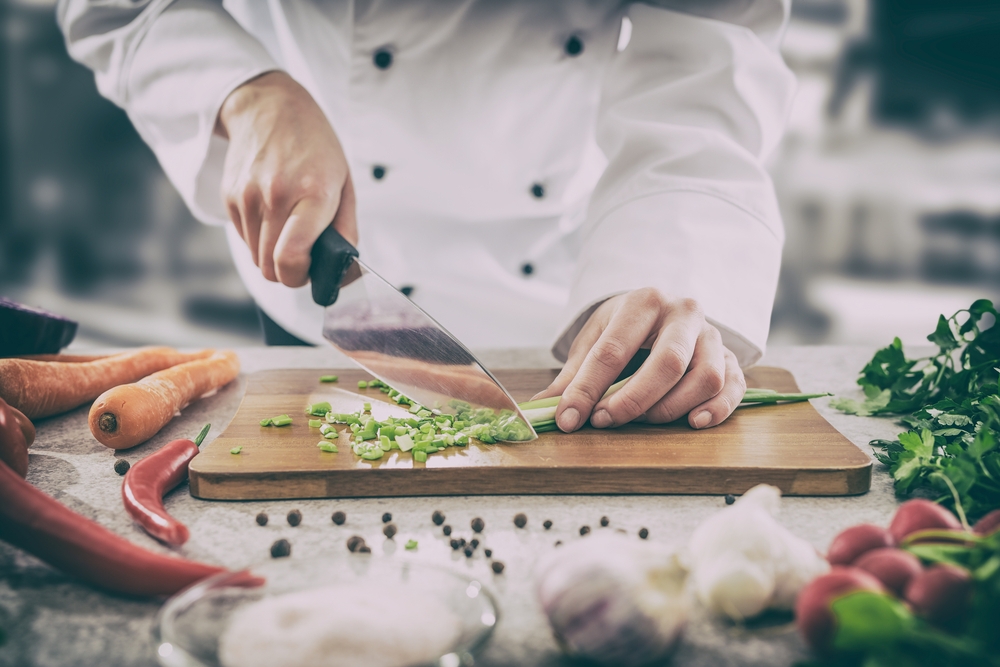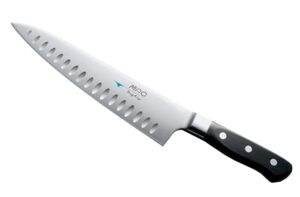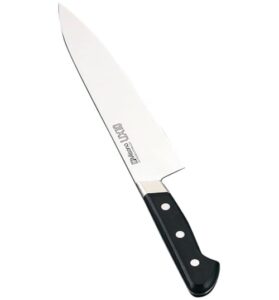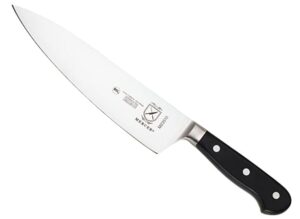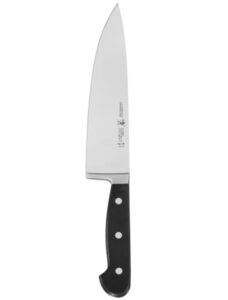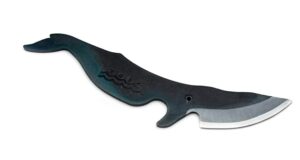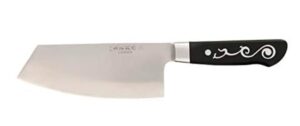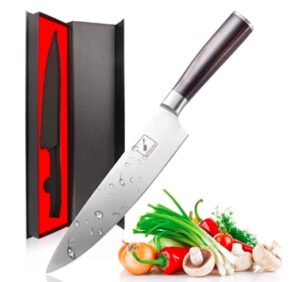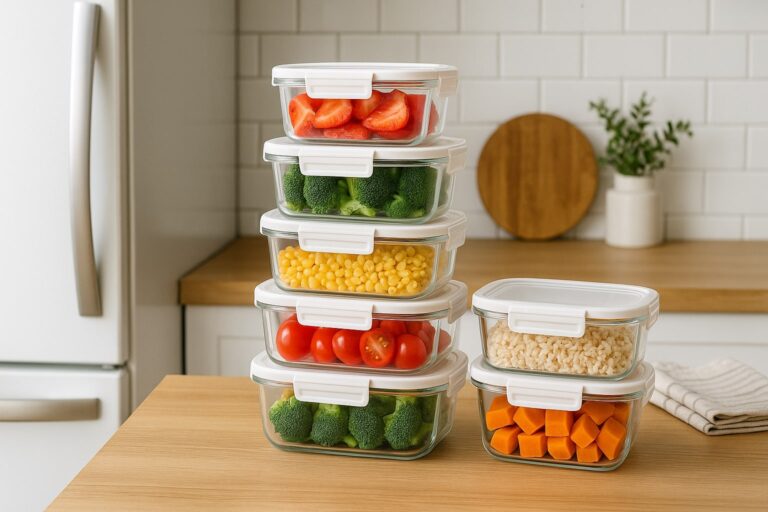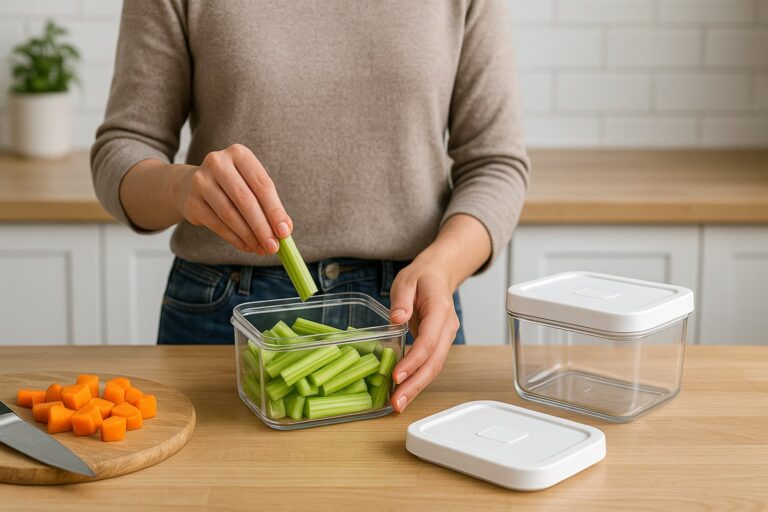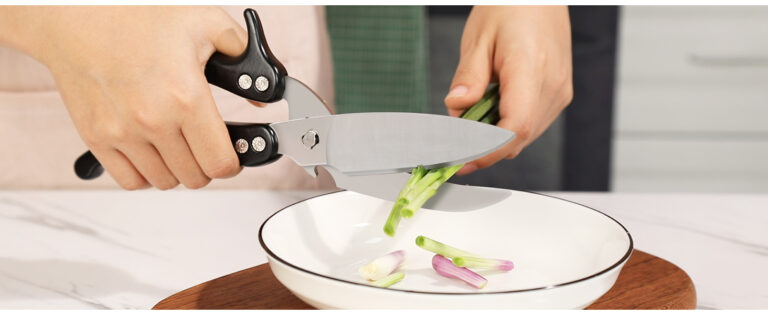The best chef knife is the basis on which a great meal is made. But if you ask three chefs what makes a fine knife, you’ll get at least five replies. The reality is that the right knife for you depends on several factors, including your level of confidence with knives, the size of your hands, and the type of food you want to prepare.
That said, it’s a reason why the simple 6- to 8-inch chef’s knife is widespread: it’s the most versatile knife. The chef’s knife is capable of digging vegetables, grinding beef, slicing herbs and nuts, and even going through small bones without too much difficulty.
There’s a bewildering selection of chef’s knives available, ranging from inexpensive, basic blades to sophisticated, specialist ones. To help you make sense of it all, we sliced and diced hundreds of knives before the plain truth came to light: a low-profile $10 blade that you sharpen every day is more effective than a $125 blade that’s rusty. Any knife needs to be sharpened; some require more than others. Many of the price gaps between knives are due to the consistency of the materials, which also affects how well the blade retains its edge.
We were always left with 8-inch knives, the sweet spot for the modern chef’s knife. Testing included tasks that you would typically perform in your kitchen, such as peeling, filling, scraping, cutting, cubing, grinding, and all other regular meat and vegetable preparation jobs. Here are the options.
What to see when shopping for a chef’s knife?
When shopping for the best chef’s knife, it’s essential to consider the features and ensure they feel like a good fit for you. Ultimately, selecting a chef’s knife is largely a matter of personal preference. What may feel perfectly balanced for one cook may feel heavy for another. Here’s what you need to consider.
Knife Handle: The first thing you’ll notice is the variety of handles and how they’re connected to the blade. Some of them are made of wood composites, a few are made of metal, and a few are made of plastic. The type of material influences the weight, feel, and price of the knife.
Knife Tang: Many knives feature a complete tang, which ensures that the blade extends around the handle, helping to stabilize it.
Knife Bolster: Another area of distinction is how the blade flows through the grip, also known as the bolster. Some are curved, and others are level. We find that the angled bolsters allow a more protected grip, which is safer for novices, while the straight bolsters allow a more controlled grip for the best chef knife users who prefer to pinch the heel of the blade.
MAC MTH-80 Professional Series 8-inch Chef’s Knife with Dimples
Hayward called this knife “a terrific all-rounder and I agree. Crafted in Japan, it features a rough, super-sharp blade and a plain wooden handle that is incredibly comfortable and stable in the hand. It’s razor-sharp for a reason—designer MAC’s modeled the company’s razor knives. The blade is beveled to a very narrow, very acute angle, which makes it incredibly sharp. High-carbon stainless steel makes it very strong, but still contains a dose of molybdenum, which decreases brittleness and makes the metal more resilient and less prone to chipping. It’s light and it looks balanced, with a form that’s natural and simple to handle.
The basil can be sliced cleanly, without bruising the leaves at all. It slices quickly through the skin of the tomato and slices clean onion dice. It’s the fastest and most reliable orange. The combination of the razor-like blade and the familiar, convenient shape of the handle made it the best overall choice. It’s on the hand of the light, but not the lightest aspect of the light.
It’s less suitable for cutting a whole chicken or sweet potato than the German knives, but it was the perfect Japanese knife for such tasks, with just the right amount of lightness to get the job done. If I could have had one knife, I would have preferred this one.
Best if You Live Near a Good Sharpener – Misono UX10 Gyutou
When you chiffonade the basil with this knife, it looks like the leaves spring out of the blade in beautiful ribbons all by themselves. This knife is a treat. “Like butter,” springs to mind time and again. It’s almost alive in your palm, ultra-light, and incredibly agile. It bites effortlessly into tomatoes and adds orange to perfectly clean, tidy pieces in a few seconds.
However, unlike the Mac, which has just enough robustness to cope with meat and pecan squash, this knife lacks sufficient power for heavy-duty work. It has a scalpel-like delicacy, and when I used it to handle huge, rough ingredients, it looked strange, even a little risky, and I was worried that I might damage the blade.
It also requires expert sharpening: one of the keys to this knife’s effectiveness is that it is sharpened to an inverted edge—one side is 60 degrees and the other is 40 degrees, so you have to buy a left-handed or right-handed model. That’s perfect, so it will have to be sharpened by someone who knows what they’re doing to remain that way. Hayward calls it a “living hell” to keep it sharp.
He feels it’s the best knife for that list, provided you have access to a professional sharpener. If you run this through an at-home wheel sharpener, you’ll hone the blade to an even “v,” which is normal, and you’ll lose the distinct consistency of the knife. Although I love this knife, I wouldn’t recommend it as an all-purpose blade.
Mercer Culinary Renaissance 8-Inch Forged Chef’s Knife.
This is a good-priced knife. It’s in a heavy, sturdy German style, made by a family-owned company in the United States. It handles just about everything you throw its way, even though it’s a little sloppy in the hand and less adept at delicate ingredients like basil, leaving subtle bruises on them.
This was one of the best knives for cutting chicken—giving Wüsthof a run for its money—but it was also remarkably adept at slicing onions, peeling oranges, and chopping vegetables. It features a plain, convenient wooden handle with no bells or whistles.
Henckels Professional S Chef Knife, 8-Inch – Best Chef Knife Brand
Henckels is one of the world’s largest knife manufacturers and has been in operation since the 17th century. They manufacture at least 24 different lines of knives (considering Henckels International), so it’s essential to know the type you’re purchasing.
Henckels Specialist S is one of their top-of-the-range lines, made in Solingen, Germany, where their core factories are located. Henckels also has factories in Spain and, as the newest development, in Japan. It’s in Japan where they’ve showcased one of their new inventions: the knives crafted by Bob Kramer, the American bladesmith who has set the bar high for quality kitchen knives.
The Specialist S is made of a single piece of steel, featuring a bolster, full tang, and three-rivet handle, making it as classic as it comes. Although the handle was made to look and sound like wood, it wasn’t. Wood handles are no longer the trend (although they are making a comeback!), and most producers believe that consumers would rather have the longevity provided by synthetic material.
Wusthof Classic Ikon Santoku, 7-Inch
Wusthof is the other “Big Two German knife maker, and some pros swear it over Henckels because they believe the standard is better. I’m not sure if this perception is justified, but it is undoubtedly supported by the fact that Wusthof has been family-owned and operated for nearly 200 years. Interestingly enough, both Wusthof and Henckels are made in Solingen (along with hundreds of other blade makers), which is one of the world’s knife-making capitals.
It’s a santoku, Japanese-style blade that many home cooks favour. It allows you the breadth of a long knife with no more bulk. And it’s notably smaller and smoother than the regular 8-inch German chef knife. This thinness provides less resistance when digging into thick materials, such as carrots and squash. Yeah, a major plus!
The Traditional Ikon santoku also features a scalloped edge that is all the rage—to prevent food from sticking, technically. (This is most effective only for some styles of cutting, but it definitely looks cool.) Since this model is of a Japanese style but made by a German knifemaker, I would call it a hybrid.
If you like the santoku look but don’t care about the Ikon’s curvy handle and want to save some cash, check out the santoku from the Wusthof Classic line. The feel differs marginally (because of the different handle), but the blade itself would be precisely the same. You pay extra for the handle.
A Great Carbon Steel Knife – Best Chef Knife for Restaurant
I’ve used a Korin Carbon Steel knife for almost 20 years, and it’s still the strongest knife I’ve ever used. Korin’s house brand knives are very well-made and not overly costly. This sharpens the model to the edge of the razor and keeps that edge longer than all of my other blades.
That said, caring for carbon steel takes more time, and if you don’t care for it, this knife can easily become a dirty, nasty thing you don’t want to use. What you need to do is clean your knife any time you use it (but especially with highly acidic foods, like lemons and tomatoes).
Regularly cleaning your knife is a healthy practice, and it helps ensure your carbon steel blade doesn’t rust. If you have small hands, or would like a smaller blade, the Korin Petty knives (about 5-6-inch blades) are also really cool.
Japana Sakai Kyuba Gyuto – Best Japanese Chef Knife
Continuing with the Japanese trend, this brand has a very fascinating story behind it. This gyuto – Japanese for a chef’s knife – is made under an alias by a legendary master knife maker. For cultural purposes that I don’t pretend to grasp, blacksmiths are prepared to produce a Western brand knife as long as it doesn’t bear their name. That’s also why this knife is not outrageously expensive, but rather just costly.
None of this would be so relevant if the knife weren’t fine, but this and its siblings – you can even buy the gyuto as part of a package with a nakiri vegetable knife and a tiny knife – are exceptional. Handmade from Japanese Damasco 46-layer stainless steel, with an octagonal maple wood shaft, the knife is perfectly balanced and very light – part warrior, part ninja, if we’re going to get stereotypical, here.
As a consequence, it’s a delight to use, although it’s certainly larger than the chef’s knives. In fact – and I confess that this is not an opinion likely to curry favour with knife purists – I find myself using nakiri from this collection more frequently than not as a ‘chef knife,’ even though it’s not one, strictly speaking. The scale and form of the nakiri, as well as the sharpness of the razor, make it a perfect choice to cut just about everything.
IO Shen Oriental Slicer – Best Budget Chef Knife
The IO Shen Oriental Slicer doesn’t sound like the typical chef’s knife, but it doesn’t. This cleaver-style blade, with its angled cutting edge, is ideal for cutting through difficult root vegetables as well as more delicate tasks, such as cutting herbs with a rock-like texture. The breadth of the blade also makes it suitable for scooping the chopped herbs or the ground garlic to add to the pan.
The knife has the heft of a European blade with the finer cutting angle of a Japanese knife. According to the maker, the blade can retain its edge longer due to its structure, which features a sheet of incredibly hard Japanese steel sandwiched between two layers of softer stainless steel. Apparently, a softer layer provides a defensive shock absorption element to the blade.
It’s been our understanding that IO Shen needs to be sharpened even less often than Global. The knife also comes with a free warranty from the manufacturer.
If you have the option of choosing two chef’s knives, a heavy German-style blade, such as the Wüsthof or Zwilling, combined with a lighter one, like the Global, would provide a pairing that will serve you well for years to come. However, if you’re looking for a single, versatile knife, the IO Shen Oriental Slicer is a great choice.
8-Inch Chef’s Knife – Best Professional Chef Knife
This chef’s knife from Misen, a specific brand, is made of Japanese AUS-8 high-carbon stainless steel, which means it’s rugged, robust, and super sharp. Its blade is sharpened to 15 °, which is sharper than conventional western-style blades, which are normally sharpened to 25 °. It has an angled bolster that facilitates a better grip during use. It felt healthy, robust, and relaxed in our tests.
The blade is marginally thinner than the other chef’s knives that we checked, which proved to be fine for chopping. It’s wonderfully designed—knives of this calibre normally cost more than twice as much!
Shun Classic 7-inch Santoku Knife – Best Steel For Chef Knife
The Shun is a classical Japanese Damacus steel blade. Indentations help minimize pressure as the knife moves through food and help keep objects from sticking to it as you cut. The Shun kept its edge well, but it’s more difficult to sharpen. You’ll want to use high-quality stones to get a sharp razor.
Damascus steel coating, which is what gives knives their distinctive ripple pattern, has a reputation for being tough to care for, but in my experience, it’s no different from carbon steel. Also, note that this is a Ho handle (round and notched for right-handers. The Shun is a good-quality knife, but it’s almost always on sale, so don’t spend more than $130 for it.
How to choose the best chef’s knife for you?
There are two major types to choose from when it comes to the chef’s knives: German knives and Japanese knives. They are not as distinct as one would imagine (and several knives mix elements of both styles!), but here are the key points of distinction worth noting:
German knives: Heavy and thick, particularly on the bolster (where the blade meets the handle), German knives can be used for a wide range of tasks, from mincing garlic to cutting through chicken bones. They have thicker blades that appear to be bent to make rocking smoother and are made of softer material, so you’ll need to sharpen them regularly.
Japanese knives: Lightweight and razor-sharp, Western-style Japanese knives tend to have a thinner blade and a straighter tip than their German counterparts, making them suitable for precise tasks such as cleanly cutting cucumbers or tuna. And since they are made of hard steel, they can typically last longer between sharpenings, but they may be more susceptible to cracking or chipping.
Discover the top-rated refrigerator brands that homeowners trust in this guide.

